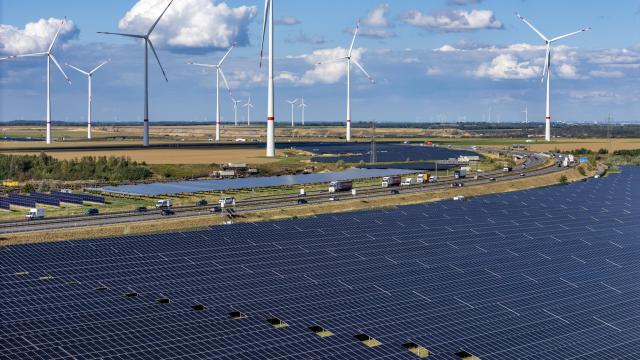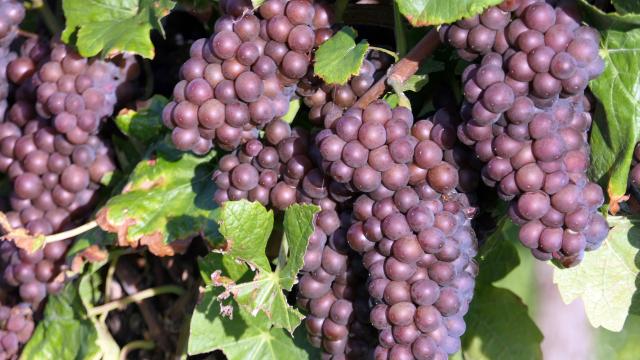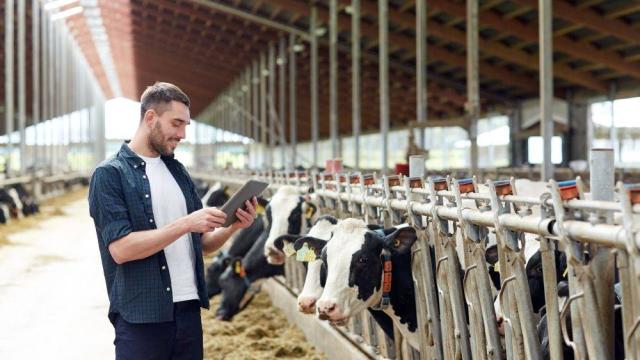


How do tiny plastic particles end up in fields and meadows?
Worldwide, an estimated five million tonnes of plastic ends up in our soils every year. Because plastic is slow to break down, its presence in green spaces and on agricultural land is increasing. However, not everything is known about the exact pathways, transport processes and possible health effects for humans and animals.
This is exactly what Zacharias Steinmetz wants to change. He is a researcher in the Department of Natural and Environmental Sciences. He studies how microplastics behave in the soil - what happens to the small particles, which are about 1 micrometre (0.001 millimetre) to 5 millimetres in size. As an environmental scientist, he is interested in the methods that can be used to detect microplastics in the soil in the first place: "I want to find out where the hotspots are. Where particularly large amounts of microplastics accumulate. And why there in particular".
This research topic has been on his mind for a long time: it all started as a student project, a literature review, he explains. Zacharias Steinmetz was a master's student at the time - and was immediately excited to be able to explore such a new research question. He went on to write his doctoral thesis on the subject: "My thesis was about plastic films used in agriculture. And the extent to which microplastics can get into the soil through them. When I started my research in 2016, not much was known about this."
Higher sample throughput
That's why he initially focused on refining methods for detecting the small particles. "I looked at their mass fraction in the soil, in milligrams per kilogram. That's the normal unit of measurement in analysis. To do this, he says, explaining his approach, you have to understand that farmland and other types of soil are very heterogeneous in structure: "There are lots of small particles in it. There are also minerals and organic matter. It's difficult to distinguish microplastics from these at first".
„I want to find out where the hotspots are. Where particularly large amounts of microplastics accumulate. And why there in particular.”
Zacharias Steinmetz
He wanted to detect microplastics made of polyethylene, polypropylene and polystyrene in soil samples - three plastics that are very common in our modern world: "Polyethylene and polypropylene are found in many packaging products such as cups and plastic bags. And polystyrene is what we know as Styrofoam." He has developed a method that, to put it simply, uses solvents and high temperatures to break down microplastics in soil samples into very small pieces. These short-chain compounds can then be easily detected and identified using a gas chromatograph.
The advantage of his method is that it can be used to test a relatively large number of soil samples for their plastic content. Zacharias Steinmetz admits that there are approaches to analysing microplastics using microscopy. However, this is time-consuming and only allows for five to ten samples per month. With the method he has developed, he can do 25 runs a week.
The thickness of the plastic film matters
Equipped with this efficient screening method, the environmental scientist looked at agricultural land in the Landau region: "fields partially covered with plastic film". Plastic film is used to protect crops from wind, weather and pollution, reduce weed growth and help retain moisture in the soil. In Germany, these films are between 50 and 200 micrometres thick. Zacharias Steinmetz: "I wanted to know what effect these films have on the soil. Do they release microplastics? And if so, in what quantities?"
His findings may surprise some people: where a thick plastic film was used, relatively few microplastics were found in the soil: "The amount was just below the detection limit of our method. Less than three milligrams per kilogram. The situation was different with thinner films: when these came into contact with agricultural land, more microplastics were found - up to 40 milligrams per kilogram. The researcher found the highest levels of microplastics in perforated films. "In other words, those that allow an exchange with the atmosphere, that have holes in them. In short, the thinner and more porous a film is, the more microplastics it releases into the environment".
What conclusions does he draw from his research? Zacharias Steinmetz: "Of course, based on the results, it can be recommended to the agricultural industry to work with thicker films. However, it is not yet possible to say exactly what this means for the consumer. This is because it is not yet known exactly how microplastics in the soil ultimately affect agricultural products. "The concentration of effect has not yet been determined". In other words, it is not yet known at what concentration damage to the environment and consumer health is possible.
Microplastics and the impact of climate change
Overall, however, studies have already shown that microplastics can affect the ability of the Earth's surface to absorb water, increasing the rate of evaporation, which in turn increases water loss. Such effects are bad for plants and could be exacerbated by climate change. "Microplastics can also increase carbon and nitrogen levels and alter enzyme activity and soil pH," he adds.
„I wanted to know what effect these films have on the soil. Do they release microplastics? And if so, in what quantities?”
Zacharias Steinmetz
Zacharias Steinmetz is pleased that efforts are already being made to curb the spread of plastic. In Germany, for example, a law banning single-use plastics and a law requiring single-use plastics to be labelled will come into force in 2021, banning the production of single-use plastic cutlery and crockery.
Analysing samples across Germany
After completing his PhD, Zacharias Steinmetz stayed in the field. He now heads the Soil Stressors team at the RPTU and continues to investigate the environmental impact of microplastics. "Over the next two years, we will be working on a project for the German Federal Environmental Agency. We will be analysing 600 soil samples from all over Germany for microplastics. This will include arable land and pastures. "We are not looking at areas that have come into contact with plastic sheeting. We want to get an overall picture of where and how much microplastic is present in the soil.
How else can microplastics get into the soil, apart from the plastic film used in agriculture? "From people throwing their rubbish on the ground. Through the atmosphere. And through wind and weather." Zacharias Steinmetz adds that he also wants to find out whether certain soils are more likely to absorb microplastics than others: "It could be, for example, that soils with a coarse structure contain more microplastics." This could be because there is more space for them.
The findings are important for regulators - in other words, for developing future regulations to ensure that fewer microplastics end up in the soil. One of Steinmetz's PhD students is currently looking at hydrophilic polymers. He is investigating how they are distributed in the soil at the microscale - and how this can be measured. "Hydrophilic polymers are found in shampoos, paints and adhesives. Here, too, we are among the first to carry out research in this field.
What excites Zacharias Steinmetz about his research focus? "The problem of microplastics started in the world's oceans. That's where they were found in high concentrations. Initially, no one thought about microplastics in soils. But it is estimated that there is five to twenty times more plastic in the terrestrial environment than in the marine environment. It's just been harder to measure there. This will change in the future - an added value of his research.

You want a deeper dive into the topic?

Then take a look at the selection of scientific publications media reports and listen to the report on Deutschlandfunk:
Steinmetz Z, Löffler P, Eichhöfer S, David J, Muñoz K, Schaumann GE. 2022. Are agricultural plastic covers a source of plastic debris in soil? A first screening study. SOIL 8:31–47.
>> GO TO THE PAPER
Steinmetz Z, Wollmann C, Schaefer M, Buchmann C, David J, Tröger J, Muñoz K, Frör O, Schaumann GE. 2016. Plastic mulching in agriculture. Trading short-term agronomic benefits for long-term soil degradation? Science of The Total Environment 550:690–705.
>> VIEW ARTICLE
Müll von Morgen: Mikroplastik auf dem Acker. Beitrag von Anke Petermann im Deutschlandradio, 18.04.2019.
>> LISTEN TO RADIO FEATURE

These topics might also interest you:



